When it comes to major corporate groups in Japan, the Mitsubishi Group stands out. Do you know the person who laid the foundation for this group? His name is Yataro Iwasaki. Yataro Iwasaki was a businessman who transformed Japan’s economy from the late Edo period to the early Meiji period, and his tumultuous life has fascinated many people. Born into a poor family of low-ranking samurai, Yataro’s journey to establishing Japan’s largest corporate conglomerate is a tale of his determination, beliefs, and exceptional management skills. Let’s delve into the secrets behind his success, his principles, and his extraordinary business acumen.
What Made Yataro Iwasaki Remarkable? An Introduction to His Life
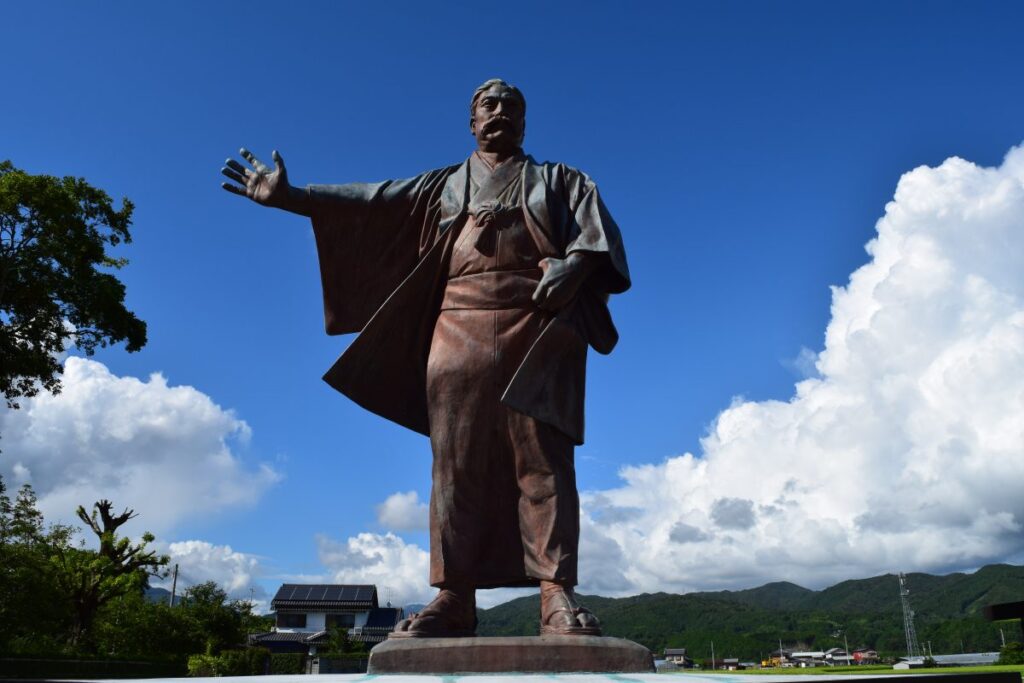
Yataro Iwasaki was a prominent Japanese entrepreneur who thrived from the late Edo period to the early Meiji period and is widely recognized as the founder of the Mitsubishi Group. Born in 1835 to a poor family of low-ranking samurai in the Tosa Domain, he showed exceptional academic talent from an early age and relentlessly pursued success despite his humble beginnings.
In his youth, Iwasaki joined the Shōrin-juku, a school founded by Yoshida Tōyō, where he studied alongside notable figures such as Gotō Shōjirō. His connection with Gotō Shōjirō became a stepping stone for his career, leading him to become an official in the Tosa Domain. During his studies in Edo, he observed the daimyo processions of the sankin-kōtai and foresaw the end of the Tokugawa shogunate, demonstrating his keen insight into the changing times.
After the Meiji Restoration, Iwasaki took over the management of Tsukumo Shokai, the commercial organization of the Tosa Domain, and transformed it into Mitsubishi Shokai. He focused particularly on the shipping industry, and during the Satsuma Rebellion, Mitsubishi profited immensely by handling transportation for government forces. Using these profits, Iwasaki ventured into various business sectors. He supported the establishment of Tokyo Marine Insurance Company, founded Mitsubishi Exchange Store and Senkawa Waterworks Company, and contributed to the establishment of Meiji Life Insurance Company, thus significantly contributing to Japan’s economic development.
Iwasaki’s management philosophy was autocratic; he believed that concentrating authority and risk in a single individual was the source of a company’s vitality. He also instructed his employees to prioritize customer satisfaction, which earned Mitsubishi Shokai high praise for its customer-oriented service.
However, Mitsubishi Shokai’s rapid growth, bolstered by government support, also led to strong opposition due to its domineering management style. The Kyodo Unyu Kaisha, established by Eiichi Shibusawa and other prominent figures, fiercely competed with Mitsubishi. This intense business war lasted two and a half years, eventually leading both companies to the brink of collapse, resulting in their merger and the formation of Nippon Yusen.
Yataro Iwasaki passed away in 1885 at the age of 50, but his brother, Yanosuke Iwasaki, continued to develop Mitsubishi further. Yataro’s life had a profound impact on the economic development of modern Japan. His story is a dramatic narrative of rising from poverty to achieve success through relentless effort and outstanding managerial skill.
A Brief Timeline of Yataro Iwasaki’s Life
Let’s take a look at the specific life events of Yataro Iwasaki in a brief timeline format.
| Year | Events |
| 1835 | Born into a poor family in Inokuchi Village, Aki District, Tosa Province (now Kochi City, Kochi Prefecture). |
| 1854 | Traveled to Edo as a retainer to Okunomiya Shosai and studied under Ansai Asaka. |
| 1858 | Returned to Tosa due to family issues and was imprisoned by the magistrate’s office. Learned arithmetic from a merchant in the same prison cell. After release, left the village and joined Yoshida Toyo’s Shorin-juku. |
| 1859 | Dispatched to Nagasaki by the domain, but was dismissed for returning home without permission to raise funds. Repurchased his family’s samurai status and married Kisei at the age of 27. His first son, Hisaya, was born. |
| 1866 | Dispatched to Nagasaki by the domain again, but dismissed for returning home without permission to raise funds. Eventually repurchased his family’s samurai status, married Kisei, and had his first son, Hisaya. |
| 1867 | Appointed by Shojiro Goto as the head of the Kaiseikan Nagasaki Trading Company. Engaged in trade with global merchants, including Glover and the Walsh brothers. |
| 1869 | Promoted to head of the Kaiseikan Osaka Branch. Elevated to assistant councilor of the Tosa Domain and supervised the activities of Tsukumo Shokai, which focused on shipping. |
| 1873 | After the abolition of the domains and establishment of prefectures, took over the management of Tsukumo Shokai, which was renamed Mitsukawa Shokai and later Mitsubishi Shokai, inspired by the three diamond shapes on the company’s flag. |
| 1874 | Relocated to Tokyo and renamed the company Mitsubishi Steamship Company. Undertook military transport for the government’s Taiwan expedition, growing into a leading domestic enterprise. |
| 1875 | Opened a regular shipping route to Shanghai and renamed the company Yubin Kisen Mitsubishi Kaisha. Also founded Mitsubishi Iron Works. |
| 1876 | After the Taiwan expedition, established Mitsubishi Merchant Marine School to train sailors. |
| 1877 | Received orders from the Meiji government for military transport during the Satsuma Rebellion. |
| 1878 | Established Mitsubishi Commercial School. |
| 1879 | Assisted in the establishment of Tokyo Marine Insurance Company. Also founded Mitsubishi Exchange Store and Senkawa Waterworks Company, entering various fields as an entrepreneur. |
| 1881 | Acquired Takashima Coal Mine. Assisted in the establishment of Meiji Life Insurance Company. |
| 1883 | Kyodo Unyu Kaisha began operations, competing with Mitsubishi. To avoid mutual ruin, the government mediated, leading to the merger of the two companies and the formation of Nippon Yusen. |
| 1885 | Passed away on February 7 due to illness. |
From a Poor Childhood to Academic Pursuits

Yataro Iwasaki was born in 1835 as the eldest son of Yajiro Iwasaki, a low-ranking samurai of the Tosa Domain (now Kochi City, Kochi Prefecture). The Iwasaki family was extremely poor, and Yataro grew up in poverty. Despite this, he always aspired for wealth and dreamed of studying in Edo and achieving success.
In 1854, his dream unexpectedly came true. Yataro was chosen to accompany Okunomiya Shosai, a scholar from the Tosa Domain, to Edo. In Edo, he enrolled in the “Kenzan-juku” school of the prominent Zhu Xi scholar Ansai Asaka, located in Surugadai. Asaka’s private academy was well-regarded and counted notable figures like Shoin Yoshida and Shinsaku Takasugi among its students.
Yataro excelled academically at Kenzan-juku. Despite their poverty, his parents sold ancestral forest land to fund his studies, demonstrating their support and belief in his potential. This financial sacrifice allowed Yataro to fully dedicate himself to his education.
However, after about a year, Yataro received news that his father had been injured in a drunken brawl back in Tosa, prompting his urgent return home.
Upon returning, Yataro continued to pursue his academic interests. In 1858, he joined the Shōrin-juku, a school run by Tosa Domain scholar Yoshida Tōyō, where he immersed himself in his studies. Tōyō recognized Yataro’s brilliance, leading to his appointment as an official in the Tosa Domain.
In 1867, Yataro was appointed head of the Kaiseikan Nagasaki Trading Company, a commercial organization of the Tosa Domain. In this role, he handled transactions with foreign merchants, including the British trader Thomas Blake Glover, gaining practical experience in trade. This marked the beginning of Yataro’s career as a merchant.
Building Mitsubishi into a Major Corporation
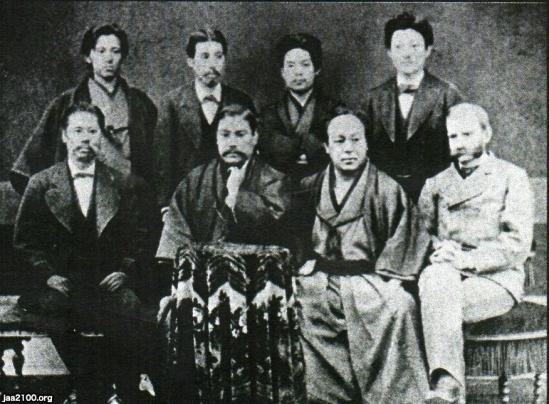
In 1868, Yataro Iwasaki was appointed the head of the Osaka branch of Kaiseikan, where he demonstrated his prowess in dealing with foreign merchants and Osaka traders. As he worked to restore the finances of the Tosa Domain, the Meiji government sought to ban domain-operated businesses. In response, in 1869, a new commercial organization, Tsukumo Shokai, was established under the leadership of Yuzo Hayashi, a key figure in the Tosa Domain. Iwasaki played a crucial role in this organization, focusing on the shipping industry.
Tsukumo Shokai was later renamed Mitsukawa Shokai and, in 1873, was further renamed Mitsubishi Shokai. Under Iwasaki’s leadership, the company continued to grow. In 1874, the headquarters was moved to Minami-Kayabacho in Tokyo, and the company developed further as the Mitsubishi Steamship Company.
In the same year, the Meiji government decided to dispatch troops to Taiwan, and Mitsubishi Steamship Company was tasked with transporting the military. As a result, the company’s name was changed to Yubin Kisen Mitsubishi Kaisha, solidifying its status as a government-designated enterprise. By 1877, during the Satsuma Rebellion, Mitsubishi had grown to dominate approximately 73% of Japan’s steamship fleet.
During this period, Mitsubishi established the Mitsubishi Merchant Marine School (now Tokyo University of Marine Science and Technology) and the Mitsubishi Commercial School (a branch of what is now Keio University), strengthening its ties with the Meiji government. Iwasaki’s close relationships with influential figures like Toshimichi Okubo and Shigenobu Okuma also played a role, showcasing not only his business acumen but also his political skills.
Building the Foundation of the Mitsubishi Zaibatsu and Contributing to Japan’s Economic Development
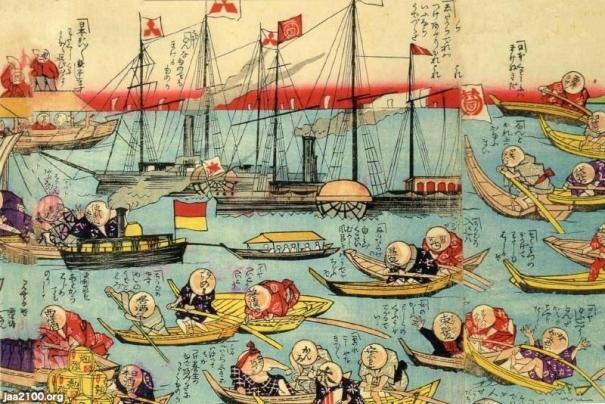
Following the assassination of Toshimichi Okubo in the Kioizaka Incident of 1878 and Shigenobu Okuma’s fall from power in the Political Crisis of 1881, Yataro Iwasaki lost his powerful supporters in the Meiji government. In response, Iwasaki advocated for “non-involvement in politics” but continued to expand his business ventures.
Iwasaki invested in Tokyo Marine Insurance (now Tokio Marine & Nichido Fire Insurance) and acquired significant assets such as the Takashima Coal Mine and Nagasaki Shipyard. These moves allowed Mitsubishi, which had started in the shipping industry, to diversify and establish a broad business base that included finance, warehousing, and water supply services, laying the foundation for the Mitsubishi Zaibatsu.
In 1883, to counter the growing power of the Mitsubishi Zaibatsu, Eiichi Shibusawa, Mitsui, and Okura Zaibatsu collaborated to establish the “Kyodo Unyu Kaisha.” This new company engaged in fierce price competition with Mitsubishi. Fearing mutual destruction due to the intense competition, the government replaced Kyodo’s naval background president and set up high-level talks between Mitsubishi and Kyodo. The critical negotiations between Koichiro Kawada and Kaoru Inoue led to the merger of the two companies and the birth of “Nippon Yusen.” This merger laid the groundwork for the further development of the Mitsubishi Group.
During this period, Yataro’s health deteriorated rapidly, and he passed away in 1885 at the age of 50. After his death, his brother, Yanosuke Iwasaki, took over the Mitsubishi Zaibatsu. Yataro’s business acumen and diversification strategy not only established the foundation of the Mitsubishi Zaibatsu but also significantly contributed to Japan’s subsequent economic growth. His achievements are still recognized today as the origins of the enduring Mitsubishi Group.
The Cause of Yataro Iwasaki’s Death
Yataro Iwasaki passed away from stomach cancer on February 7, 1885, at the age of 50. In 1883, the government suspected that Mitsubishi was financially supporting the anti-government Constitutional Progressive Party and established Kyodo Unyu Shipping Company to crush Mitsubishi. This led to intense competition between Mitsubishi and Kyodo Unyu, during which Iwasaki’s health deteriorated, and he could barely eat.
The doctor who examined Iwasaki informed his family that his condition was incurable. Despite this, Iwasaki continued to work, going to the office on days when his symptoms were mild and summoning his subordinates to his sickbed on bad days to give instructions.
On February 7, 1885, Iwasaki temporarily stopped breathing but regained consciousness after a camphor injection. Surrounded by family and key company figures, he uttered his final words: “Of the ten things I wanted to do, I have only accomplished one or two. But there is no more time.” At that time, Mitsubishi was in a fierce struggle with Kyodo Unyu, and the shipping business that Iwasaki had devoted his life to was in a critical state. He died without realizing his dream of establishing global shipping routes with Japanese vessels.
After his death, Yataro’s younger brother, Yanosuke Iwasaki, took over Mitsubishi. He declared his intention to “carry on my late brother’s aspirations with unwavering determination,” boosting employee morale. Yanosuke accepted the merger with Kyodo Unyu, considering the national interest, leading to the founding of Nippon Yusen in 1885. The ownership ratio was Mitsubishi 5, Kyodo 6, with Kyodo’s Masaaki Morioka becoming the new president.
Although Mitsubishi relinquished its shipping division, many Mitsubishi associates were among Kyodo’s shareholders, effectively giving Mitsubishi control over Nippon Yusen. Over time, Nippon Yusen increasingly reflected Mitsubishi’s influence, with former Mitsubishi members like Taijiro Kikkawa and Renpei Kondo becoming presidents. Thus, Yataro Iwasaki’s dream of establishing global shipping routes with Japanese vessels was eventually realized.
Yataro Iwasaki’s Personality

Yataro Iwasaki was known for his bold and daring temperament, combined with meticulous calculation and excellent judgment. He built Japan’s largest corporate group in a single generation. Uninfluenced by others’ opinions, he consistently pursued the maximization of profits and the strengthening of control. His management style was uncharacteristically Japanese and had more in common with contemporary American entrepreneurs.
A symbolic event in his career was the Satsuma Rebellion. During this war, Mitsubishi dedicated all its resources to transporting supplies and troops for the government. In addition to its 38 ships, Mitsubishi purchased seven foreign ships and, by the end of the war, controlled 73% of the national shipping. The government’s maritime transportation costs accounted for over 10% of the war expenses, and in 1877, Mitsubishi recorded an extraordinary profit of approximately 1.2 million yen.
Around the same time, Mitsui & Co. also significantly increased its net profit through transactions related to the Satsuma Rebellion, but the scale was incomparable to Mitsubishi’s achievements. Yataro’s management skillfully understood the new government’s strategy and leveraged his personal connection with Toshimichi Okubo to invest resources boldly and quickly, yielding enormous profits.
Yataro also believed in concentrating all company authority in the hands of the president, a novel management style in Japan at the time. The regulations of the Mitsubishi Steamship Company, established in 1875, clearly stated that the company was owned and operated by the Iwasaki family and that the president held all authority. This autocratic management style was significantly different from the traditional Japanese companies like Mitsui and Sumitomo, which emphasized risk management and operations by specialized managers. Yataro’s approach marked the beginning of a new corporate culture.
Episodes of Yataro Iwasaki
Finally, let’s look at some episodes from the life of Yataro Iwasaki. Yataro Iwasaki has many fascinating stories that are definitely worth exploring!
Yataro Iwasaki’s Talent Revealed Through Gotō Shōjirō’s Cheating
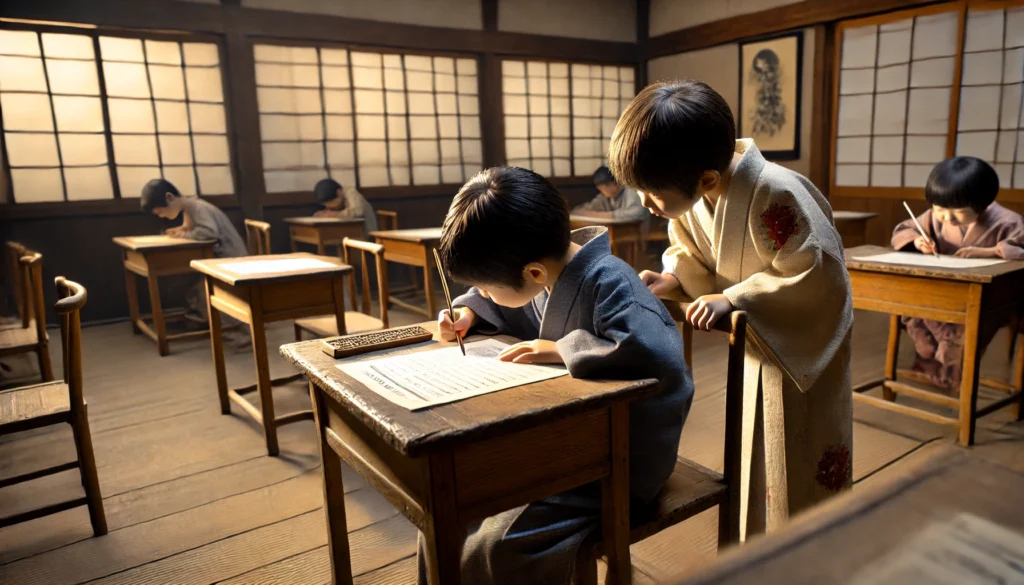
As a child, Yataro Iwasaki entered the Shōrin-juku, a school run by Yoshida Tōyō. Among the students was Gotō Shōjirō, who would later become a prominent figure in the Meiji government. It was through his interactions with Gotō Shōjirō and Yoshida Tōyō that Yataro began his rise to prominence.
One day, Yoshida Tōyō became suspicious of the exceptional answers Gotō Shōjirō provided for a homework assignment. Upon questioning, Shōjirō confessed that it was actually Yataro Iwasaki who had come up with the answers. This revelation led Yoshida Tōyō to recognize Yataro’s talent and hold him in high regard. As a result, Yataro began his path as an official in the Tosa Domain.
Learning Arithmetic from a Fellow Prisoner
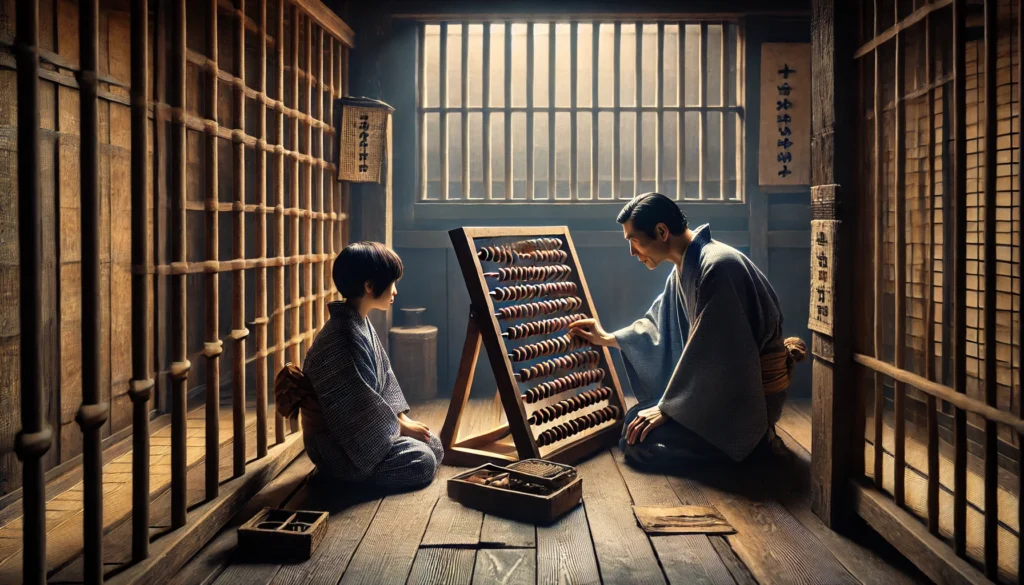
As a young boy, Yataro Iwasaki achieved his dream of studying in Edo, where he studied under the Zhu Xi scholar Ansai Asaka. However, after about a year, he received news that his father, Yajiro Iwasaki, had been severely injured in a drunken brawl. Yataro quickly returned home to the Tosa Domain.
Upon returning, Yataro attempted to mediate the conflict between his father and the village headman who had fought with him. However, all the witnesses sided with the headman, and Yataro’s complaint was dismissed by the magistrate’s office. Angered by this injustice, Yataro wrote a scathing criticism on the magistrate’s office wall, leading to his imprisonment.
During his time in prison, Yataro had the opportunity to learn arithmetic from a merchant who was also imprisoned. This experience allowed him to acquire the basics of commerce, which he later used to achieve great success. This knowledge and experience played a significant role in laying the foundation for the future Mitsubishi conglomerate.
Yataro Iwasaki: The First to Introduce Bonuses in Japan
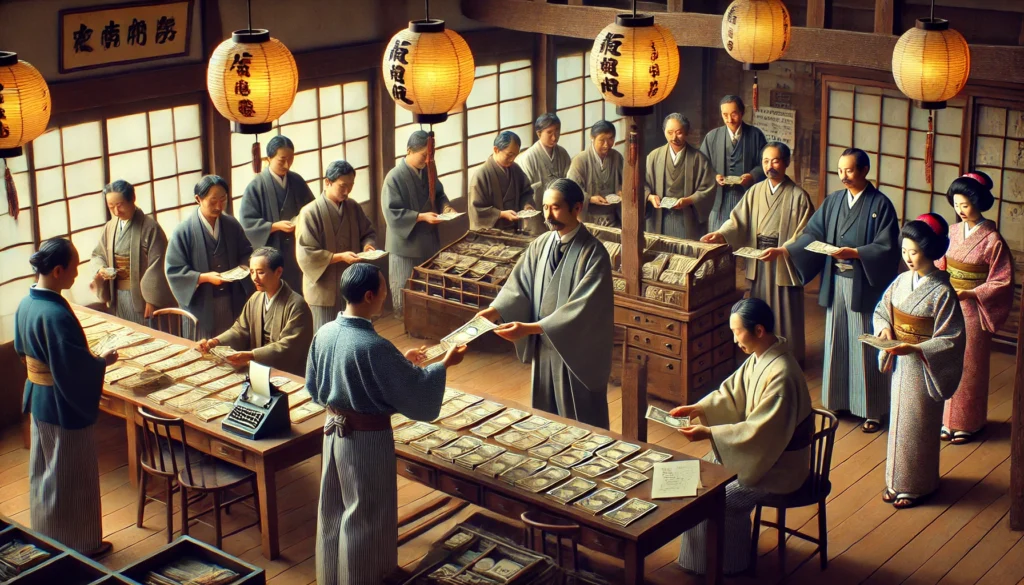
The origin of Japan’s bonus culture is attributed to Mitsubishi Company in 1876. In 1874, Mitsubishi cooperated with the government’s Taiwan expedition, earning their trust. The following year, the company opened a shipping route to Shanghai and successfully acquired Pacific Mail Steamship Company’s interests with government support. However, in 1876, the British P&O Company entered the Japanese route, leading to intense price competition.
During this time, Yataro Iwasaki implemented bold restructuring and cost-cutting measures, including reducing his own salary by 50%. Employees also relinquished part of their salaries, uniting to face the competition. After six months of fierce competition, P&O Company withdrew, and Mitsubishi emerged victorious.
To reward his employees’ efforts, Iwasaki issued a year-end bonus on December 28, 1876. This bonus was a uniform amount based on employees’ qualifications, equivalent to approximately one month’s salary.
Although this bonus became an annual tradition from 1888, Yataro Iwasaki was the first to introduce bonuses in Japan, driven by his desire to reward his employees’ hard work.
Yataro Iwasaki and the Okame Mask in Front of the Store
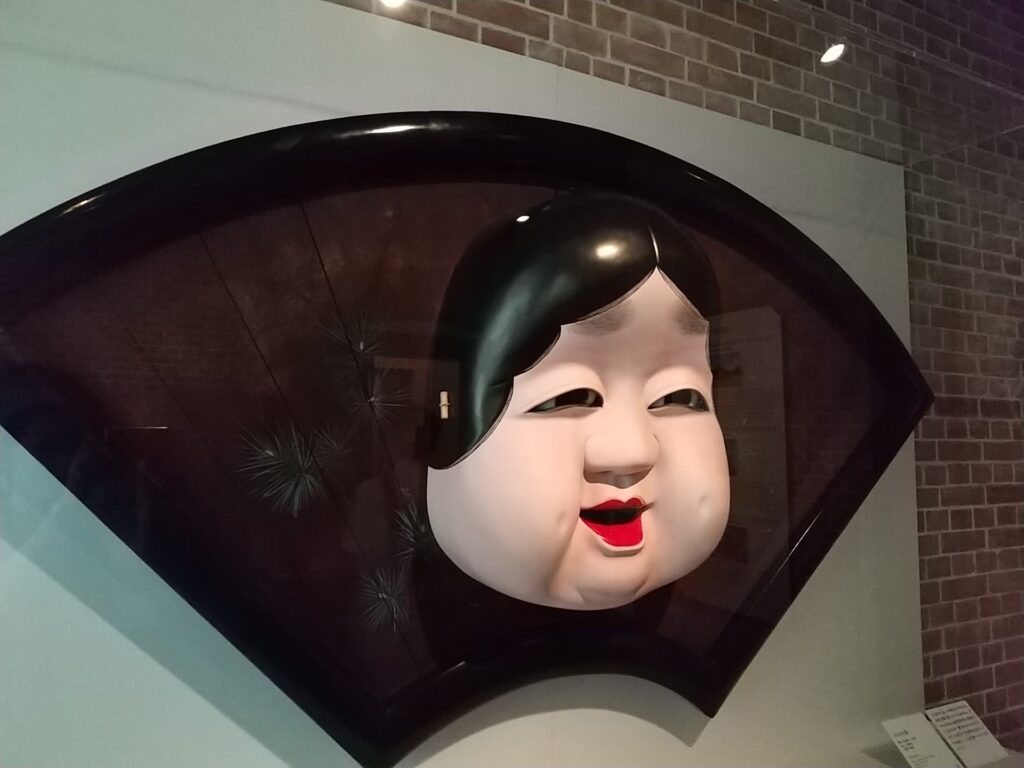
One of the primary businesses of Mitsubishi Shokai, managed by Yataro Iwasaki, was the shipping industry. At that time, the largest player in the shipping industry was the state-owned “Japan Mail Steamship Company,” which had a reputation for arrogance. To differentiate itself, Mitsubishi Shokai placed an “Okame mask” in front of its store. This mask symbolized the desire for employees to greet customers with a gentle demeanor and to create a pleasant atmosphere.
Yukichi Fukuzawa, upon seeing the Okame mask, remarked, “Making employees emphasize friendliness is something that modern managers cannot do. Iwasaki understands the essence of business.” In practice, Mitsubishi Shokai’s employees were known for always greeting customers with a smile and providing customer-centric service, which earned the company high praise.
Yataro Iwasaki’s business acumen was evident not only in pursuing profits but also in prioritizing customer satisfaction. His management philosophy was a key factor in Mitsubishi Shokai’s success.
Incidentally, the Okame mask can be viewed at the Mitsubishi Ichigokan Museum. Those interested are encouraged to visit.
Origin of the Mitsubishi Emblem
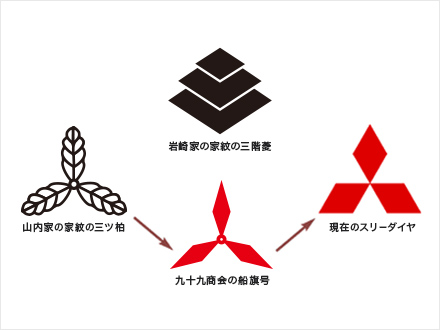
The origin of the modern Mitsubishi Group traces back to Tsukumo Shokai, founded by samurai from the Tosa Domain. “Tsukumo” was another name for Tosa Bay. Later, Yataro Iwasaki took on the role of overseeing the business from the domain’s position. After the abolition of the feudal domains and establishment of prefectures, Iwasaki became the head of Tsukumo Shokai and changed its name to Mitsubishi Shokai.
The origin of the Mitsubishi emblem is often explained as a combination of the Iwasaki family crest, “Sankai-bishi” (more precisely “Kasanekai-bishi”), and the Yamanouchi family crest, “Mitsuboshi” (three oak leaves), of the Tosa Domain lords, where Yataro Iwasaki hailed from.
However, there are some lingering questions about this explanation. At the time of Tsukumo Shokai’s establishment in 1870, Iwasaki was still in a supervisory role on behalf of the domain and not in an ownership position. Additionally, it seems unlikely that he would combine his family crest with that of his lord while serving the domain.
Originally, “Mitsuboshi” without a surrounding circle looks like three elongated diamond shapes from a distance. The early emblem of Tsukumo Shokai also featured elongated diamond shapes with a circle in the center, resembling “Mitsuboshi.” Thus, it seems more natural to consider that the Mitsubishi emblem was a stylized version of the Yamanouchi family crest, “Mitsuboshi.”
Collision with the Kishu Domain Ship and Potential Heavy Compensation
Kameyama Shachu, Japan’s oldest trading company founded by Ryoma Sakamoto, later transformed into Kaientai, where Yataro Iwasaki served as an accountant.
Kaientai’s ship “Iroha-maru,” a 45-horsepower, 160-ton vessel borrowed from the Iyo Ozu Domain, collided with the 150-horsepower, 887-ton Kishu Domain ship “Meiko-maru” during its maiden voyage, resulting in its sinking. This incident led Iwasaki, Ryoma Sakamoto, and Shojiro Goto to negotiate with the Kishu Domain.
The negotiations were extremely challenging, but ultimately, the Kishu Domain agreed to pay 70,000 ryo in compensation. Iwasaki’s negotiating skills played a significant role in this success. At one point, Sakamoto was so prepared for a potential conflict with the Kishu Domain that he sent a letter to his wife saying, “In case anything happens, take care.” The Kaientai was in a precarious situation, but Iwasaki’s negotiations brought the matter to a peaceful resolution.
Yataro Iwasaki and the Taiwan Expedition
In 1871, an incident occurred where 54 Ryukyu islanders who had drifted ashore in Taiwan were killed, causing tensions between Japan and the Qing dynasty. In response, the Meiji government decided to dispatch troops to Taiwan in 1874. Initially, they sought assistance from American and British shipping companies for troop transport, but were refused cooperation due to their neutral stance. Consequently, the government had to turn to the “Japan Mail Steamship Company.”
The Meiji government purchased large ships and provided them to the Japan Mail Steamship Company, which was in competition with the Mitsubishi Steamship Company. The Japan Mail Steamship Company was reluctant to cooperate as they feared losing coastal route customers to Mitsubishi during the military transport.
Seeing the reluctance, the government, through Shigenobu Okuma, directly requested cooperation from Mitsubishi Steamship Company. Yataro Iwasaki responded, “Mitsubishi exists because of the nation,” and accepted the task of military transport to Taiwan. This mission allowed Mitsubishi Steamship Company to acquire three large ships, further strengthening its competitiveness in coastal routes. Consequently, the Japan Mail Steamship Company dissolved in 1875.
Yataro Iwasaki and Eiichi Shibusawa: Contrasting Management Philosophies
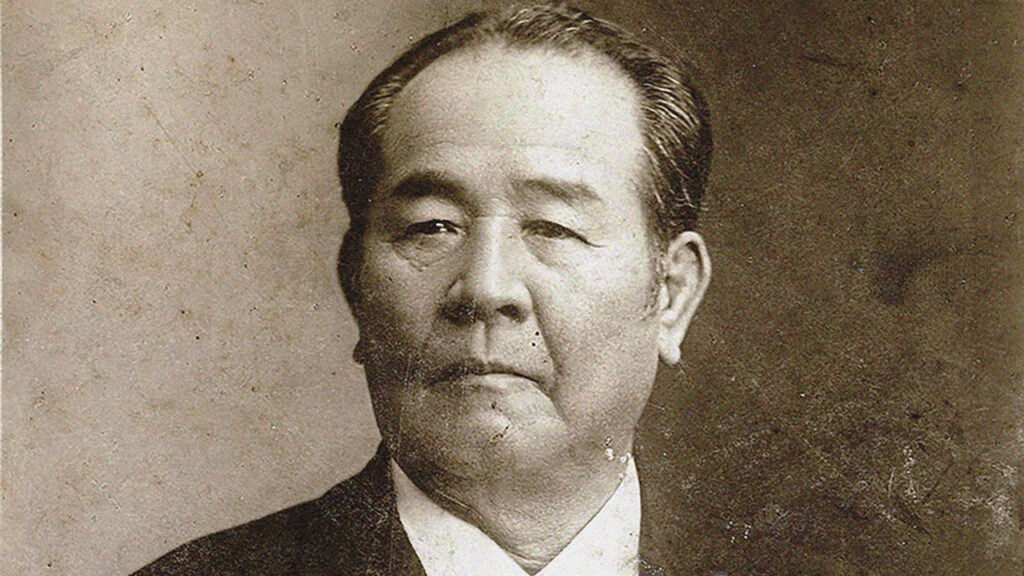
Yataro Iwasaki and Eiichi Shibusawa were two prominent entrepreneurs of Japan’s Meiji era, yet they held entirely different management philosophies. Iwasaki believed in a dictatorial management style that concentrated authority and risk in a single individual, leading Mitsubishi Trading Company with this approach. In contrast, Shibusawa advocated for “joint-stock management,” which involved pooling capital and wisdom from many people and promoting the establishment of companies with numerous shareholders.
Eiichi Shibusawa, born six years after Iwasaki in a wealthy farming family in Fukaya, Saitama, initially participated in the sonnō jōi (revere the emperor, expel the barbarians) movement. Later, he served the Hitotsubashi family and accompanied Tokugawa Yoshinobu’s brother, Akitake, on a European tour, where he studied modern state systems. After the Meiji Restoration, he joined the Ministry of Finance and contributed to establishing financial systems, but resigned in 1873 to engage in founding numerous companies in the private sector.
On the other hand, Iwasaki, in the 1875 Mitsubishi Steamship Company regulations, explicitly stated, “Although it is named a company and forms the body of a company, it is entirely a family business, and all matters related to the company shall be subject to the president’s sole discretion,” maintaining a dictatorial management approach.
The two once shared drinks at a ryotei in Mukojima, but the atmosphere shifted when the conversation turned to company management structures, eventually leading to a falling out. Shibusawa recorded the details in his diary, but no records remain from Iwasaki’s side.
Their differing beliefs became apparent in the battle between Kyodo Unyu Kaisha and Yubin Kisen Mitsubishi Kaisha. Shibusawa, opposing Iwasaki’s autocratic management, established Kyodo Unyu with government support. This business war lasted two and a half years, ultimately resulting in the merger of both companies to form Nippon Yusen.
Despite sharing a common philosophy that “enterprises exist because of the nation and society,” Shibusawa and Iwasaki had many conflicts over management beliefs. Shibusawa lived long enough to witness Japan’s development into the early Showa period. One wonders what he would have thought about Mitsubishi having the most publicly traded shares if he had seen the era of zaibatsu dissolution by the GHQ.
Yataro Iwasaki’s Profits from the Satsuma Rebellion and the Creation of Rikugien and Kiyosumi Gardens
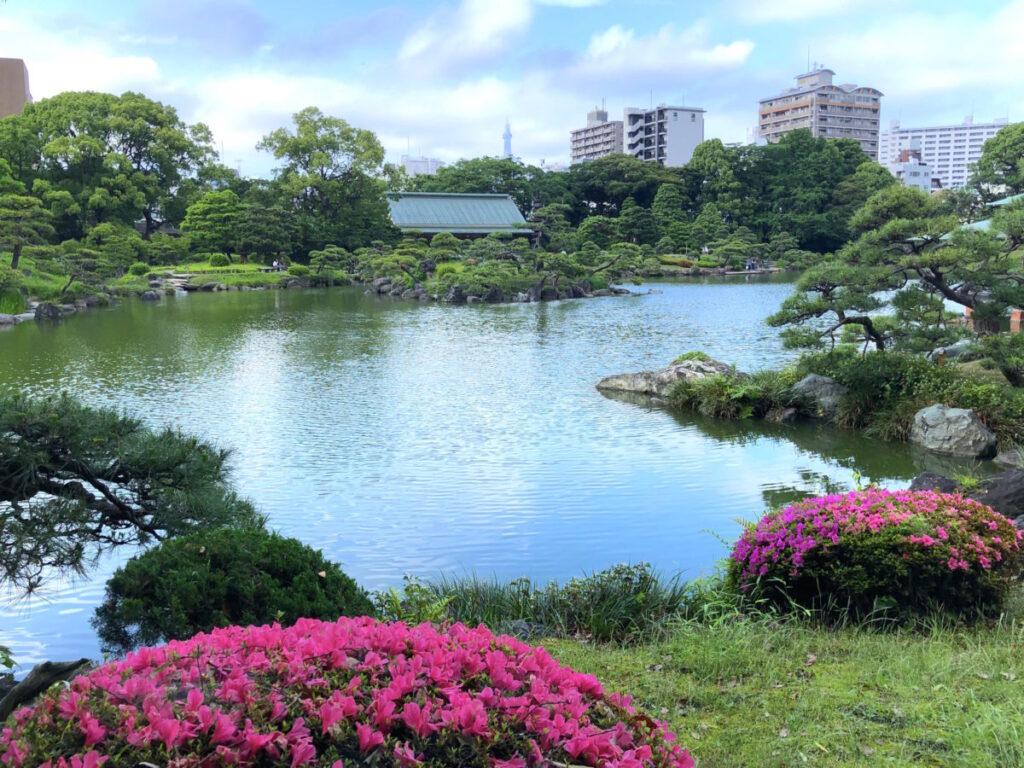
In the 1877 Satsuma Rebellion, Mitsubishi was responsible for transporting government troops, earning “enormous profits.” The total war expenditure was 41.56 million yen, with Mitsubishi’s revenue amounting to 2.99 million yen and a net profit of 930,000 yen, which exceeded the annual budget of Tokyo City at the time.
Yataro Iwasaki invested these profits into various ventures, including mining, and purchased three large estates in Tokyo. The first estate was in Shimotani Kiyamachi near Shinobazu Pond in Ueno, originally an Edo residence of the Takada Domain’s Sakakibara family, purchased in 1878. The expansive property covered over 8,500 tsubo (approximately 28,100 square meters). Iwasaki built a new main house here and moved from Surugadai in 1882. He fell ill at this residence and passed away in February 1885, surrounded by his family and Mitsubishi executives. The estate was later rebuilt into a Western-style building by his eldest son, Hisaya, and is now open to the public as the Former Iwasaki House Gardens.
The second estate was in Fukagawa Kiyosumi. Iwasaki acquired several former secondary residences here and created the Japanese-style garden “Fukagawa Shinbokuen.” This garden was used as a place for Mitsubishi employees to socialize, with regulations such as “Do not disrupt others’ joy with loud singing” and “Do not force others to drink.” A Western-style building designed by Josiah Conder was later added, serving as an employee club and guest house. Today, it is known as Kiyosumi Gardens.
The third estate was Rikugien in Komagome. Originally a strolling garden created by Yanagisawa Yoshiyasu, a close aide of the fifth shogun Tsunayoshi, it had fallen into disrepair after the Meiji Restoration. Iwasaki transplanted thousands of trees and placed large rocks around the pond to restore the garden. Rikugien was later donated to Tokyo City by Hisaya and is still used as a place of relaxation for citizens.
Yataro Iwasaki Predicts the Future After Witnessing Sankin-kotai
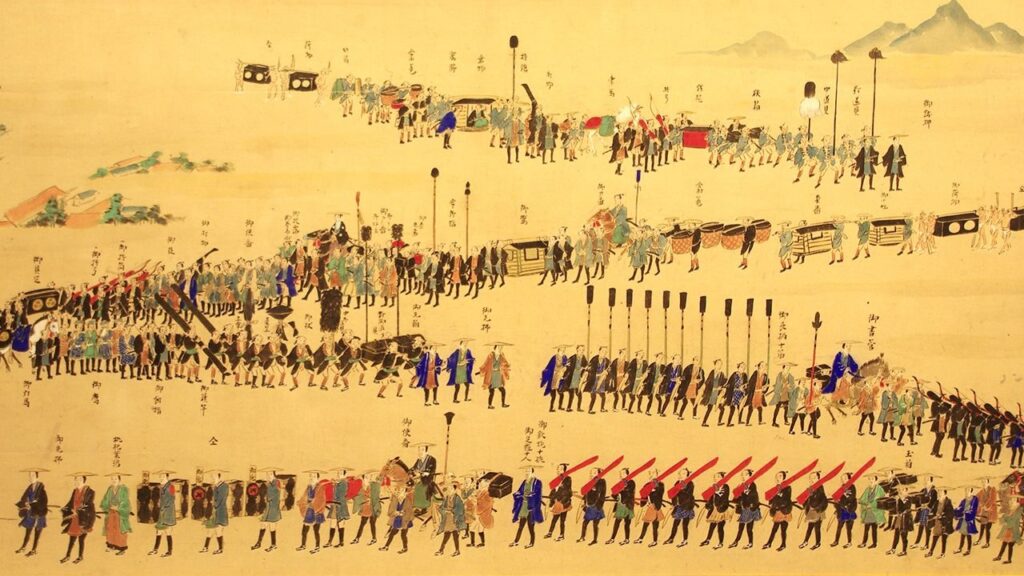
During his studies in Edo, Yataro Iwasaki witnessed the daimyo processions of sankin-kotai. He is said to have remarked, “If they continue to focus on such superficial displays and dream of perpetual peace, the Tokugawa era will come to an end.” At that time, Japan was being pressured by America to open up after Perry’s arrival, and Yataro was disheartened by the shogunate and its retainers’ lack of urgency despite the critical situation. His insight foresaw the impending transformation of the era.
Summary
How did you find this article? Yataro Iwasaki was an entrepreneur who rose from a humble background to establish Mitsubishi, one of Japan’s largest corporate groups. He demonstrated exceptional academic talent from a young age and, after rising through the ranks as a Tosa Domain samurai, founded Mitsubishi Trading Company, achieving great success, particularly in the shipping industry. During the Satsuma Rebellion, Yataro profited immensely by handling transportation for the government forces. He used these profits to diversify into mining and purchase extensive gardens in Tokyo, among other ventures. Yataro’s management philosophy emphasized customer satisfaction and encouraged treating employees with kindness. His leadership greatly influenced Japan’s modern economy, and his legacy continues as the foundation of the Mitsubishi Group.
Our site also features various other fascinating articles on Japanese history and culture. If you’re interested, please feel free to explore our other content!



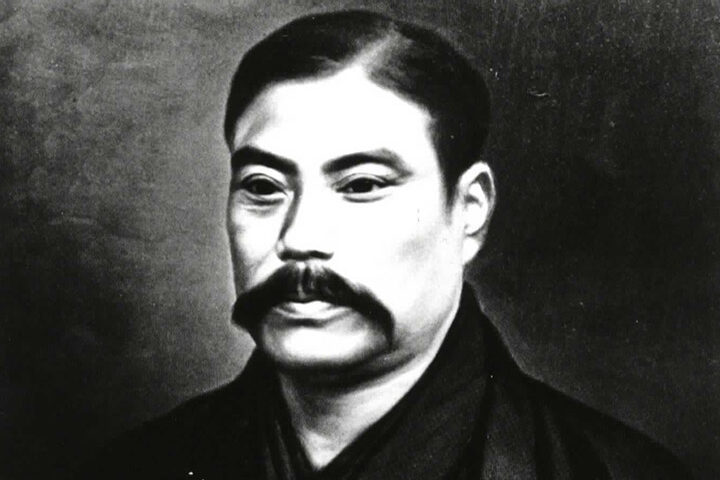
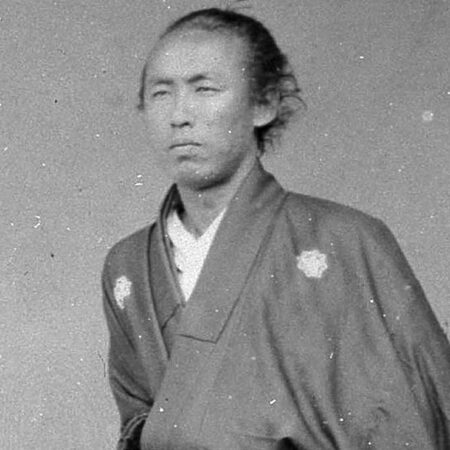
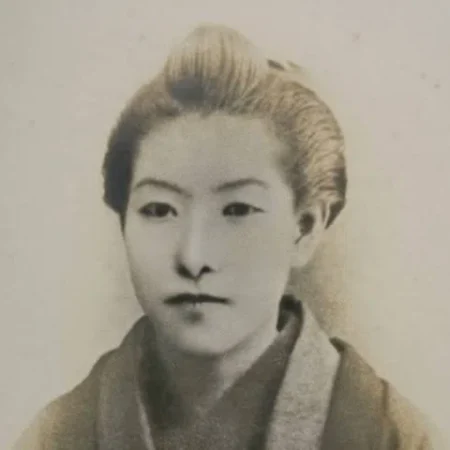
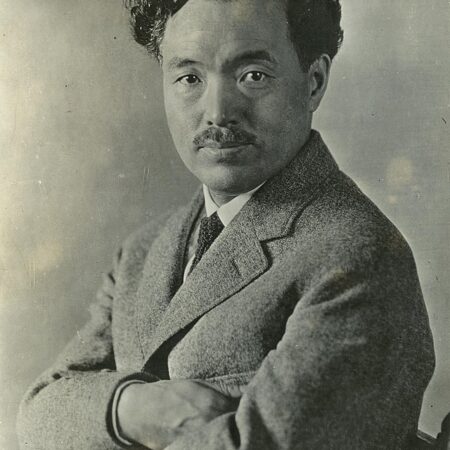
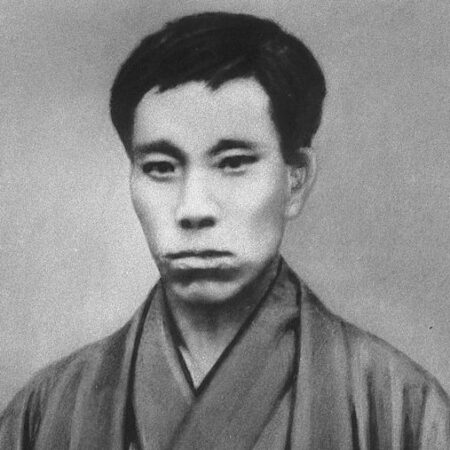
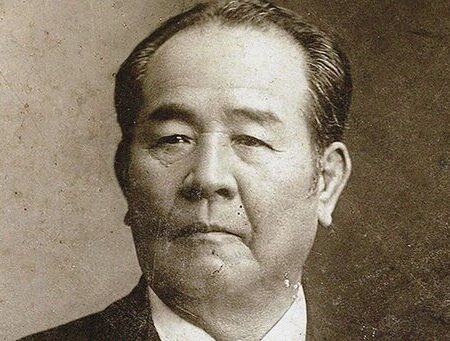
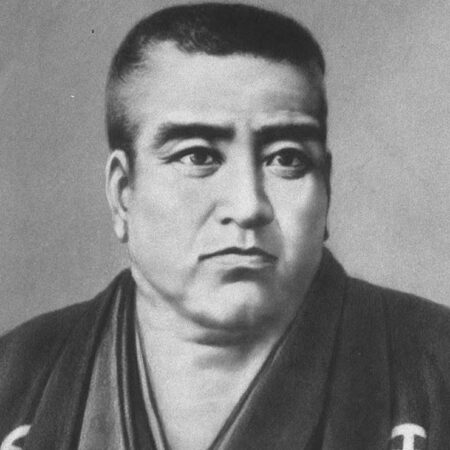
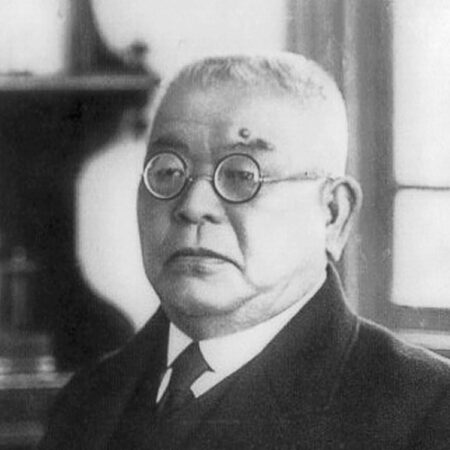
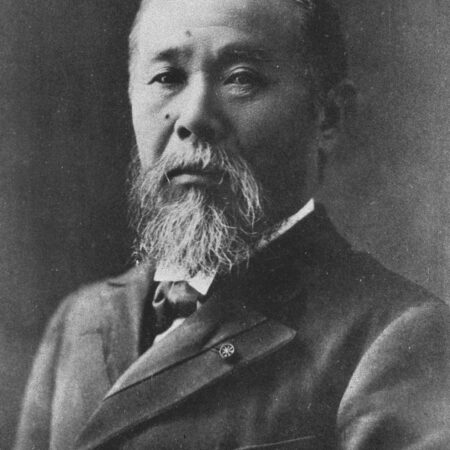



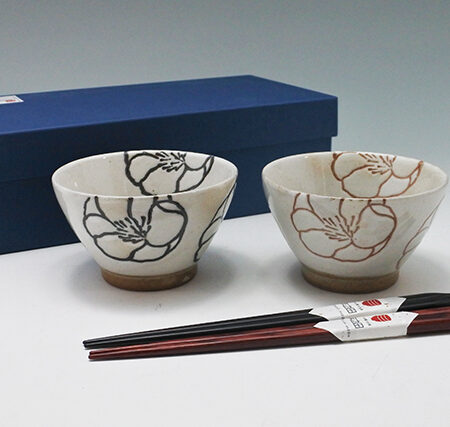
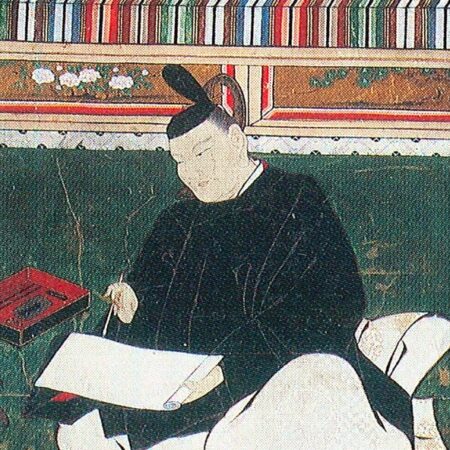
コメント